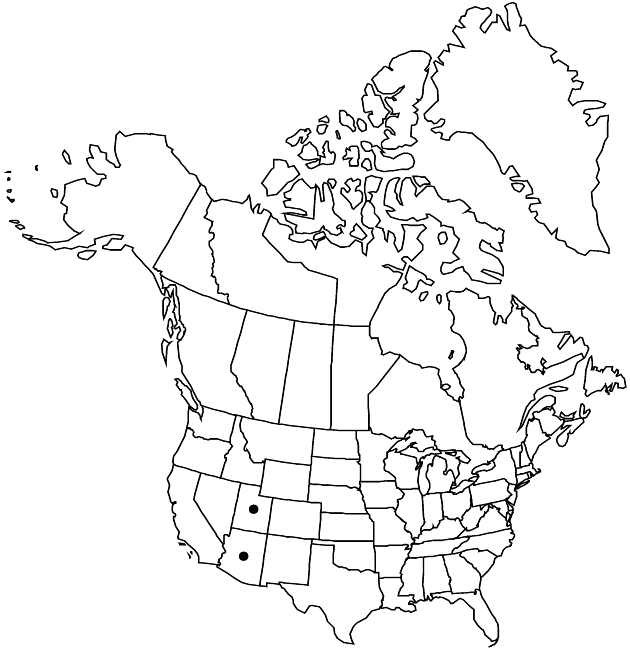Chrysothamnus stylosus
Sida 21: 1627. 2005.
Shrubs, 40–120 cm; with woody, freely branched caudices (not readily differentiated from young shoots). Stems green when young, soon becoming tan to white or grayish with age (bark of older stems flaky), branched, resinous when young, less so with age. Leaves ascending to spreading, becoming deflexed; sessile; blades with conspicuous midnerves plus 1–2 pairs of collaterals often evident, lanceolate to linear-elliptic, falcate, 6–35 (–60) × 1–9 mm, often folded, margins sometimes undulate, apices acute, mucronate, ± spinulose, faces glabrous, ± gland-dotted, resinous. Heads usually in dense, cymiform arrays (to 7 cm wide), rarely borne singly, not overtopped by distal leaves. Involucres hemispheric, 8–12 × 9–15 mm. Phyllaries 40–60+ in 3–5 series, in spirals, mostly tan, ovate to lanceolate, unequal, 3–10 × 1–1.8 mm, greenish distally but scarcely herbaceous, apices acute or acuminate, often recurved, faces often glutinous. Disc-florets 30–40+; corollas 6–8.5 mm, lobes 1–1.7 mm; style-branches 2.8–3.5, appendages 1.3–1.7 mm. Cypselae tan, narrowly cylindric, 4–5 mm, glabrous or sparsely hairy, resinous; pappi of 12–15, white or stramineous, lanceolate to lance-linear scales 2–4 mm. 2n = 18.
Phenology: Flowering summer–fall.
Habitat: Canyonlands, dunes, in sandy soils, with 4-winged saltbush, ephedra, sand dropseed, blackbrush, and juniper
Elevation: 1100–1700 m
Discussion
Chrysothamnus stylosus has been treated previously in the monotypic genus Vanclevea.
Selected References
None.
